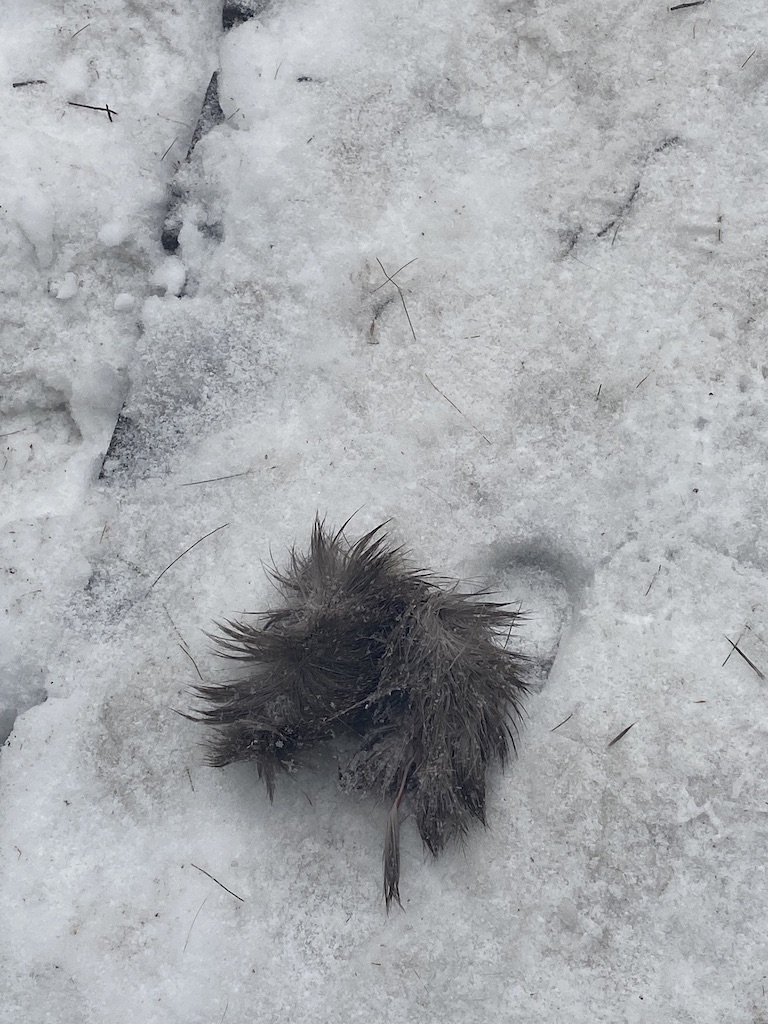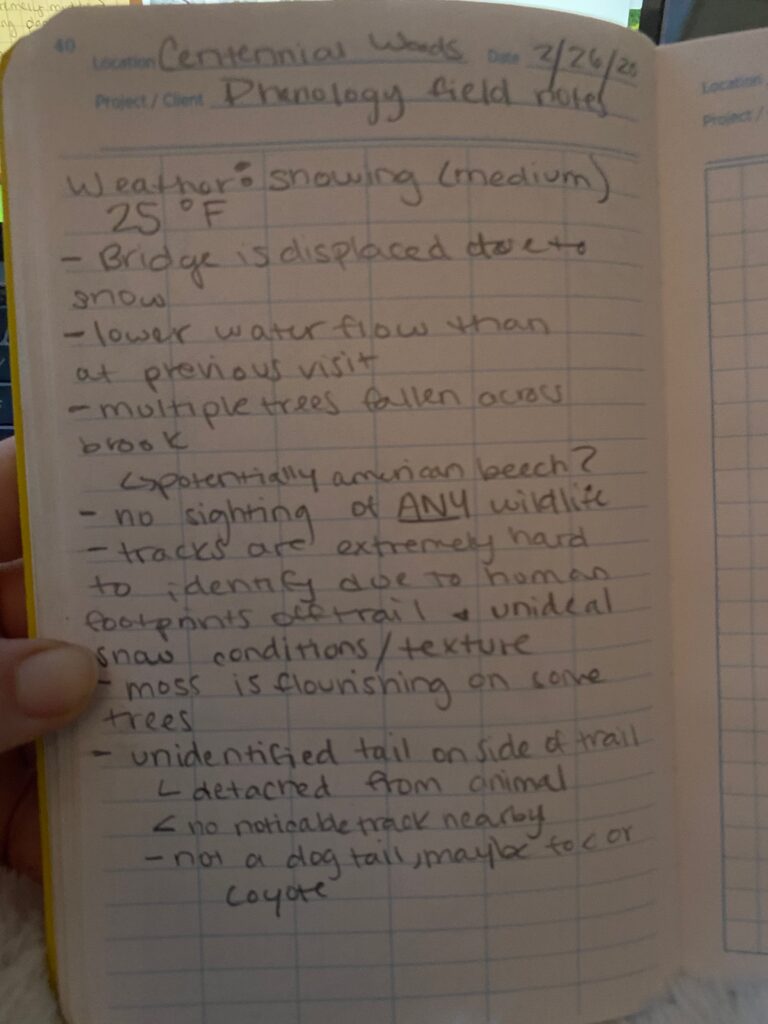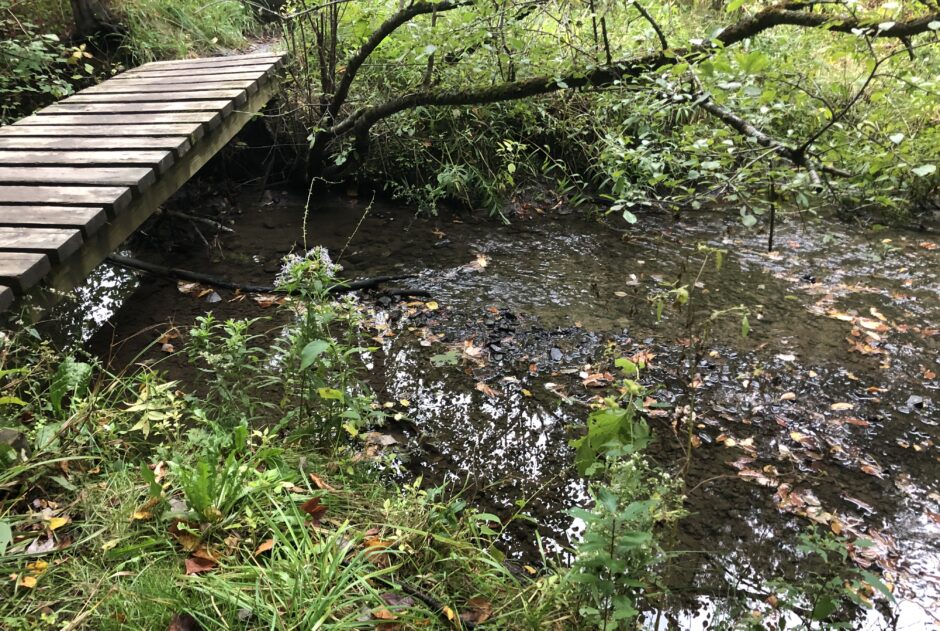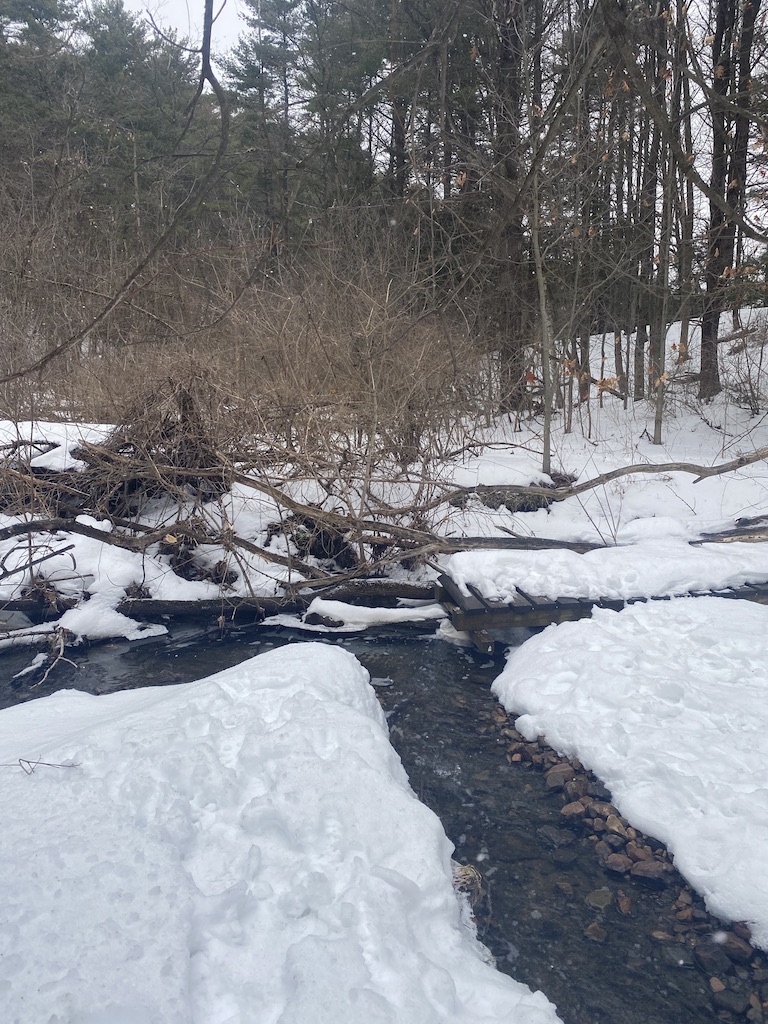There are not many evident changes at my site since I last visited in January. Snow cover is still covering all understory plants, and almost no wildlife is present to my eye. The direction of the brook seems to have changed slightly along with the positioning of the bridge most likely due to differing storm conditions.
Wildlife Activity
While exploring the Centennial Woods Brook area, I came across this unidentified tail. I have since come to the inclusion that this tail most likely belonged to an Eastern Coyote. This species can survive in a variety of habitats including agricultural, urban, wetland, and forested areas (Vt Fish and Wildlife, n.d.) They favor a mixture of hard and softwood forests which makes sense of why the tail is present in Centennial Woods. The Eastern Coyotes predators include wolves, mountain lions, and humans, but it doesn’t seem as though these would’ve been the cause of the tail detachment and/or potential death. Nighttime is prime predation time for these Eastern Coyotes. Coyotes reproduction period is in February and the species actually mates at night as well. The Coyote is more successful in predation at night, but they still continue to hunt throughout the day due to low calorie intake during the winter (Faber, S., 2017). Coyotes prey on deer fawn and more commonly deer carcasses, as well as smaller rodents during the winter months. There were no visible tracks so it is hard to determine what exactly this Coyotes interaction would have been with other animals. However, I can speculate that the Coyote interacted with a wolf or moose which drove it to its chase and therefore death.



